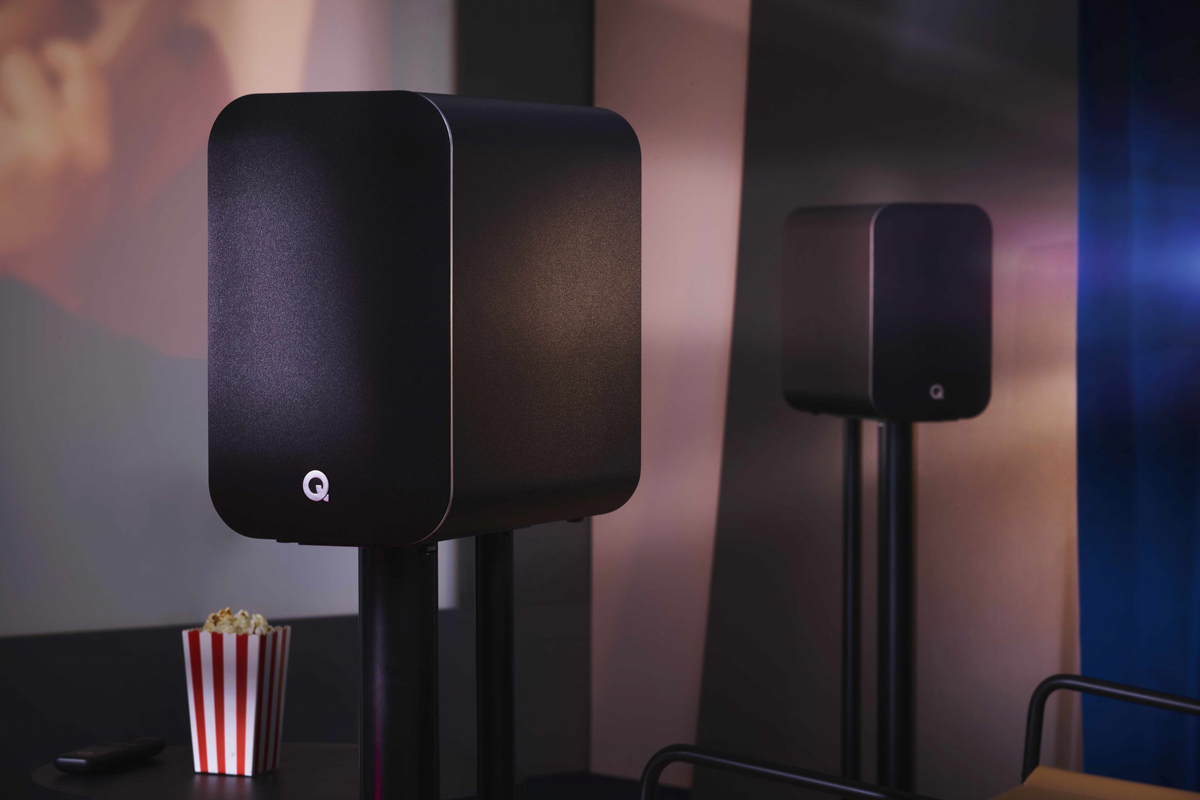Q Acoustics, founded in the UK in 2006, produces loudspeakers that range from the inexpensive 3010i compact bookshelf model ($299 per pair, all prices in USD) to the Concept 500 floorstander ($6499/pair), with a plethora of choices in between. These include a myriad of home-theater options, including several subwoofers and an active soundbar.
The latest addition to the company’s lineup is the M20 HD powered wireless music system, priced at $599. Back in February 2019, my brother Hans reviewed Q’s mid-level 3050i floorstander ($999/pair) for sister-site SoundStage! Access and enjoyed the “top-to-bottom coherence of sound that’s unusual at that price.” SoundStage! founder Doug Schneider reviewed the 3020i bookshelf speaker ($399/pair) the same year on SoundStage! Hi-Fi and said: “Hands down the 3020i is a winner . . . sounds superb . . . with as much bass reach as you can expect from so small a speaker.” Doug’s wife also approved of the 3020i’s appearance, and with both writers extolling the virtues of the models they reviewed, I had high expectations for the diminutive M20 HD powered speakers.
Description
The M20 HD system arrived on my doorstep via UPS and the roughly 25-pound box caught me off guard. “Heavy” was my first thought, and “big” was my second. The unboxing revealed an attention to detail—the Styrofoam packaging was stamped with Q Acoustics’ logo, and all materials were secured with folded cardboard to ensure no movement during transport. Each speaker was wrapped in a thin foam sheet, sporting a sticker that visually explained how to remove them from the box; grip the sides, not the top and bottom.
With the two matte-black speakers—they are also available in walnut veneer or matte white—properly removed, I took a peek at the Q Acousticswebsite to find out what was inside the 11″H × 6.7″W × 11.7″D cabinets. The primary speaker contains a pair of class-D amplifiers—one for the right speaker, one for the left—each producing 64W into a 4-ohm load. Each enclosure houses a 0.9″ decoupled silk-dome tweeter and 4.9″ midrange-bass driver hidden behind a permanently attached black cloth grille. Specified frequency response is 55Hz to 22kHz.
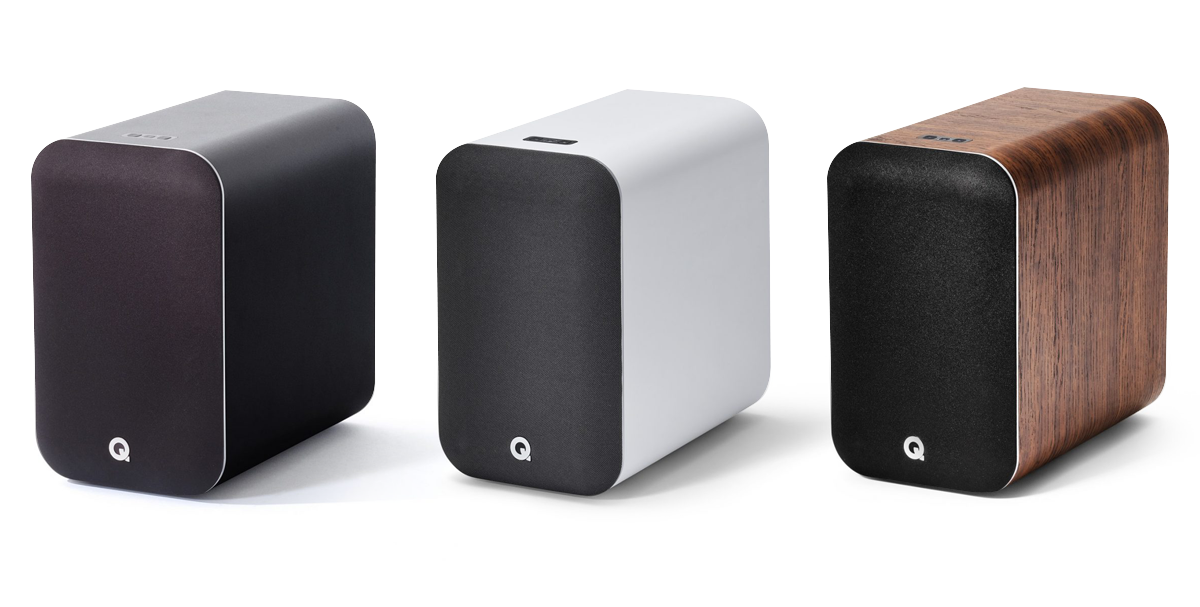
The appearance of the speakers is subtle, but hardly nondescript. The muted finish and rounded edges soften the look of the speakers; the slight variance in the shades of black of the grille cover and the enclosure, along with the thin matte-silver flourish around the grille, give the M20s a good room presence without being ostentatious. A raised, metallic Q logo, centered at the lower edge of the grille, provides an accent on the front of each speaker. Nothing overdone, but quietly present. So English.
The M20 HD speakers are solidly built, as well as aesthetically pleasing. The description on the company’s website says it all: “The beautifully sculpted cabinets use Q Acoustics’ proprietary P2P™ (Point to Point) bracing to support the parts of the enclosure that need to be stiffened. The result is an exceptionally rigid cabinet that eliminates internal standing waves to improve the focus of the stereo image and give the soundstage more accuracy than ever before. The grille’s curved contours are also designed to disperse any tweeter activity, keeping unwanted reflections to a minimum.” On the top of the primary speaker there’s a power/standby button flanked by plus/minus volume buttons.
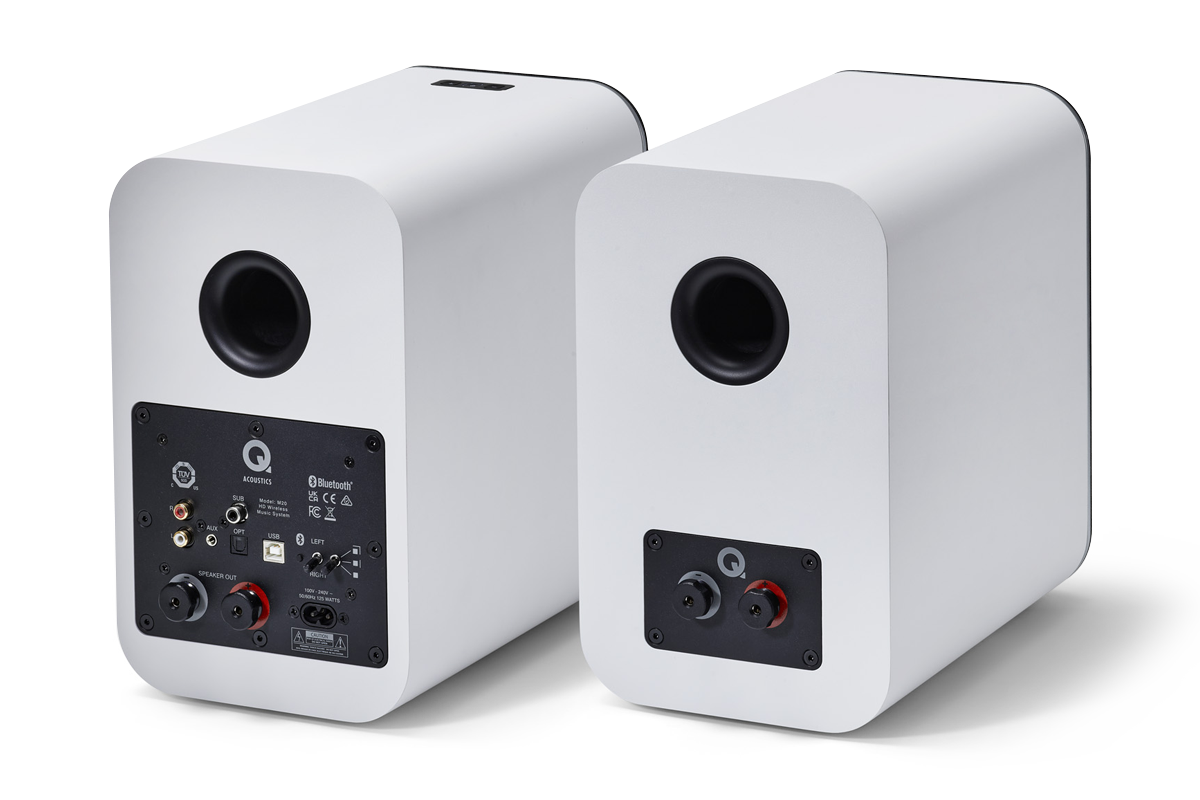
The primary speaker’s rear panel offers a variety of inputs that could connect almost any device to the M20 HD: a pair of RCA line-level jacks and a 3.5mm stereo input for analog sources, and USB Type-B and optical S/PDIF (TosLink) inputs that accept digital signals up to 24-bit/192kHz. Next to the digital inputs is a Bluetooth pairing button for the aptX Bluetooth 5.0 receiver. The M20 HD also has a subwoofer output and an EQ switch to “optimize the audio performance” by adjusting the bass output should the speaker be placed in a corner, or less than 8″ from a wall. I tested all settings and used the neutral setting—since the speakers were not placed near a wall or in a corner—throughout my trial. I didn’t use a subwoofer with the M20 HD, but I noticed that there’s no low-pass filter. My favorite feature was a switch to select the primary speaker as either the left or right channel, making it easy to position the system.
British pragmatism, that.
The small black remote is simple and easy to use. There is a silver Q on the bottom and the standard fare of buttons on top: Power, Mute, Play/Pause, Volume, and Forward/Backward. Selector buttons are provided for the Bluetooth (BLU), optical (OPT), analog (ANA), and USB inputs. A long press on the Bluetooth button sets the M20 HD in pairing mode. As someone who leans toward the anal-retentive side, I appreciated the attention to detail; selecting an input lights up the LED around the power button on the top of the primary speaker with a correlating color to indicate which input is in use. A minor detail for sure, but a sensible one.
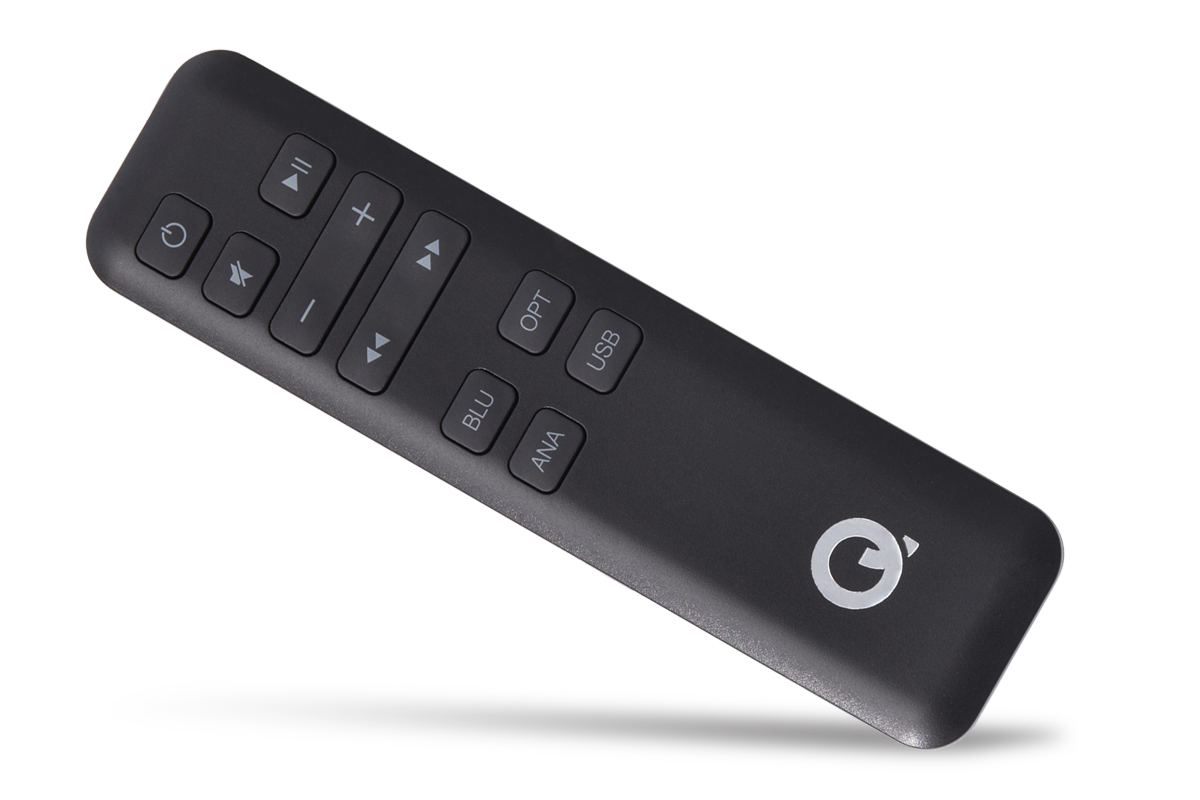
Setup
The 12′ of speaker wire included—intended to connect the powered primary speaker to the passive second speaker—was color-coded in gold and silver for easy identification of the conductors. I dutifully read the manual, as one should when provided with color-coded wires, and within three minutes I had the speakers up and running.
My Samsung TV is centered on the long wall of my 22′ × 13′ living room, just over 9′ from my listening position. I sat each speaker on a small end table, 24″ high, on each side of the TV, with the inside edges of the speakers 5′ apart and the rear ports 15″ from the wall. I had no need for the included foam bungs, which are to reduce bass output should the rear ports be too close to a wall. They are a nice inclusion, as opposed to using a pair of old, mismatched socks or wash towels that have been relegated to the rag bin. I love the British; no fuss. Everything I could need was there in the clearly labeled Accessories box.
I connected the included optical cable to my Samsung TV and pressed the OPT button on the remote for an immediate connection.
Fun and games
I began my viewing with the second half of the Portugal vs. North Macedonia World Cup soccer qualifier on live TV. The commentary was clear and demonstrated no lag whatsoever. The whistles of the crowd were distinct, as were their exuberant airhorn blasts and chants. Next, I pulled up the pilot episode of Yellowstone, recently released on Peacock, via the app on my Apple TV. The scene opens with the aftermath of a traffic accident. The hissing of the radiator, the click of cowboy boots on the asphalt, the main character John Dutton’s whispers to his horse, and a gunshot all synced appropriately and centered properly. When I turned up the volume the soundscape was still clear and centered, and the haunting violin of the soundtrack showed greater depth than when played through the TV speakers.
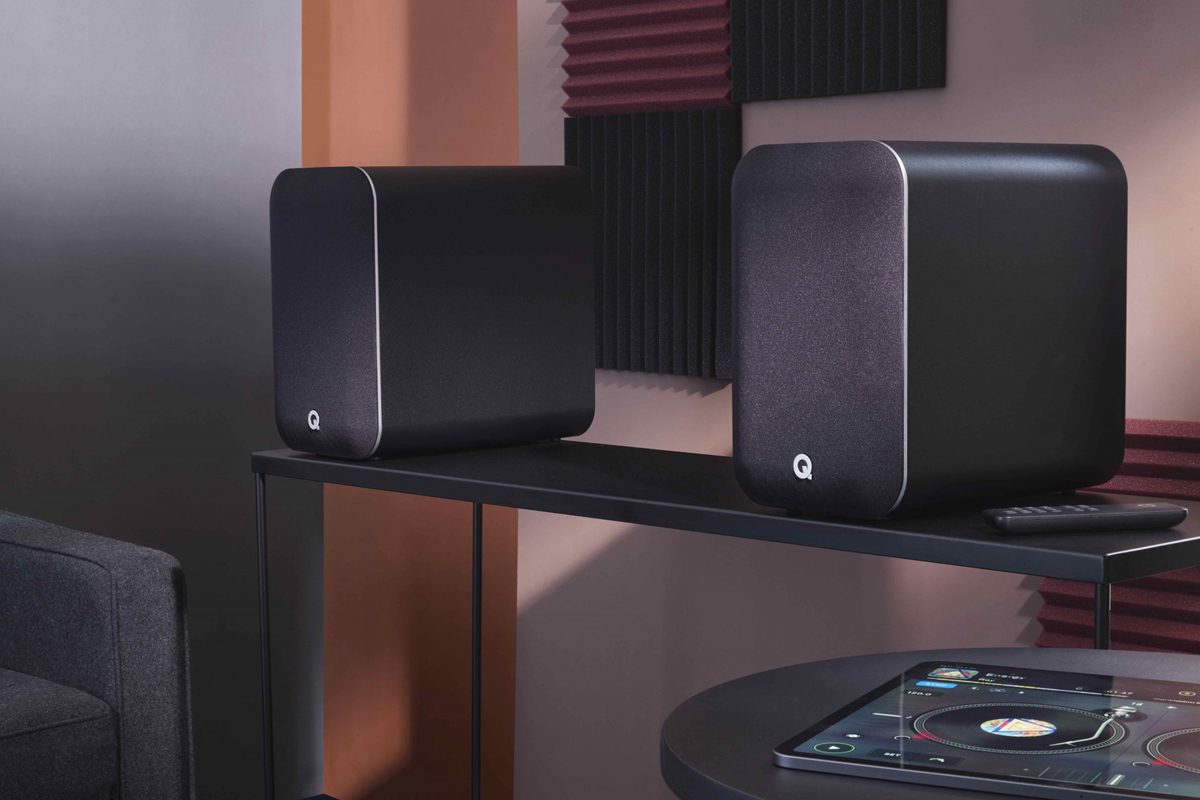
Modern technology demands simplicity and seamlessness, so I decided on a quick test to see if I could queue up Spotify on my iPhone 11—Peter Gabriel’s “Heroes” from the 2010 release Scratch My Back (Special Edition) was already playing in my kitchen—and change it to the M20 HD system. I tapped Bluetooth on the phone, selected “Q M20 HD,” and Gabriel’s crooning soon overrode Kevin Costner’s portrayal of John Dutton in the living room. It was the same when I connected my MacBook to the M20 HD via Bluetooth (instead of USB) and played the most recent song in the queue: Bruce Springsteen’s “Jersey Girl” from his 1985 Greatest Hits (16-bit/44.1kHz AIFF, Columbia Records). Gone was Yellowstone’s violin, and the Boss, Clarence, and Miami Steve took over. I’m not sure if the producers would appreciate my alteration of the soundtrack, so a click of the OPT button on the M20 HD’s remote restored order in less than a second; the violin returned to set the tone as police sirens roared in the background. It should be noted that switching away from Bluetooth to either the USB or optical inputs paused Spotify. When I hit play on my iPhone, Spotify once again overrode the TV.
Designed to be flexible, the M20 HD system is promoted on Q Acoustics’ website as being able to produce “low-distortion, accurate but highly immersive stereo sound” for “music, movies and gaming.” No traditional audiophile company would ever market its speakers for gaming, but Q is taking a bold approach to seek out a new clientele, indicating that high-quality audiophile-grade speakers are not just for music listeners. I own 14 different video-game systems and quickly picked out a few to test the M20 system. I played all gaming audio via the optical output of my TV to the M20 system. I connected my Xbox 360 to the TV via an HDMI cable and enjoyed the “click clack” of LEGO Marvel Super Heroes, as I searched for the gold brick I had missed years ago. The M20s were lively but not really tested, so I connected my Xbox One for a quick game of EA Sports’ NHL 16. I started with a practice session and the swoosh of the players’ skates was clearly discernible, as was the clank of the puck careening off the crossbar. Though I failed to score in practice, I quickly hit the net when playing a game. I could easily hear each of the game’s distinct sounds: the cheers of the crowd, the clack of stick on puck from my slapshot, and commentator “Doc” Emrick’s call of my goal were all clear and centered.
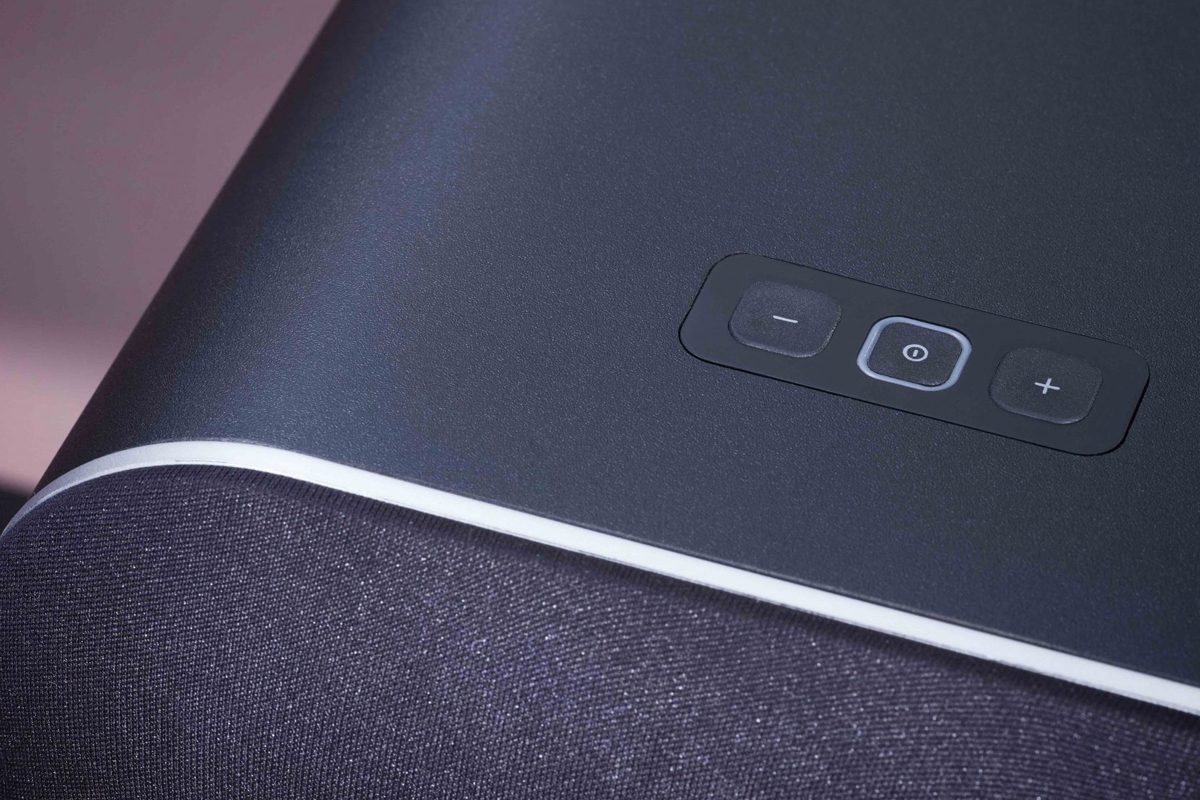
Lastly, I attached a Nintendo Wii and dropped in Mario Kart Wii. The Wii needed to be connected to the TV via HDMI through a Musou 1080P HDMI-to-RCA composite A/V converter. There is nothing like the sound of an incoming red Koopa shell beeping to get me fired up, and the M20 HD system soon took me back 15 years; Yoshi’s high-pitched “Yoshi Yoshi” cheer as I crossed the finish line in first was bright and lively. I must admit I lost the first race and the M20s dealt with the lower-octave loser refrain just as easily. I enjoyed the video-game audio through the M20s, as well as the trip down memory lane, and can only imagine how much better the games would sound with a subwoofer attached.
Having established I could easily move between sources, I decided to leave the speakers connected to the TV for the remainder of my review period. Given the aplomb with which the M20s handled audio for TV and video games, I eagerly anticipated what they had to offer musically.
Listening
I mostly used Spotify and Amazon Music via Bluetooth for casual listening during my time with the M20 HD system, but I played my lossless CD rips from iTunes 12 on my 2013 MacBook Air via USB when listening critically.
Greek composer Vangelis’s 1976 album Albedo 0.39 (16/44.1 AIFF, RCA Victor) contemplates the immensity of space. The opening track, “Pulstar,” begins with a pulsing electronic note, waxing and waning in intensity as it dances on the soundstage. It continues in the background when the theme is introduced, and Vangelis layers electronic drums and multiple synthesizer rhythms and bursts over the pulsating beat. The bass notes introduced soundstage left, just prior to the 60-second mark, are subtle, yet the M20s didn’t allow them to be lost in the bustle of xylophones swishing from right to left, while they did allow the delicate, electronically created tinkling glass sounds to have their own space on the right. Further additions of single bell chimes were similarly highlighted without being lost as the volume of the melody takes over. Even when I turned up the volume and repetitive wind-like howls sprang from the left channel, the M20s clearly articulated each new sonic layer as the song climaxed. The abrupt click of a tape recorder being stopped is heard within the mix, before transitioning to an antiquated British telephone recording—“At the third stroke, it will be 10, 3, and 40 seconds . . .”—which is followed by a series of three reverberating beeps. The M20s did an excellent job of differentiating the assorted sounds while also allowing for this tweeter-heavy track’s modest bass line to breathe.
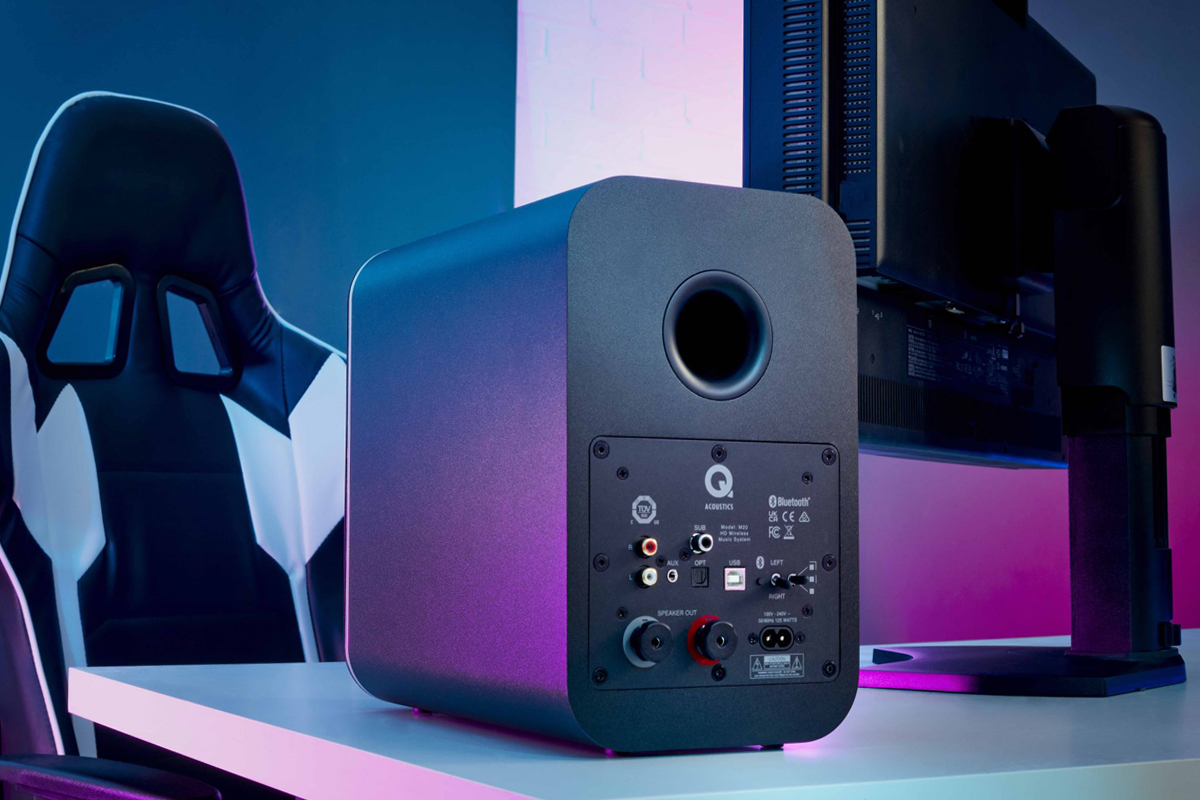
I jumped nearly 40 years forward in time to the bass-driven 12th track of Tom Holkenborg’s 2015 Mad Max: Fury Road (Original Motion Picture Soundtrack, “Redemption” (16/44.1 AIFF, Sony Music). In contrast to the busyness of Vangelis, the simplicity of the Holkenborg track highlighted the breadth of the M20s’ capabilities. The soft, deep bass underpins the featured violin, but the diminutive speakers didn’t lose the fine detail. Haunting and smooth, the bass had depth as it almost growled in the background. I was still able to hear the subtle vibration of the bass behind Holkenborg’s layered strings, all while a muted trumpet lurked in the background. Neither detracted from the theme, with the bass on the far left in the mix, the trumpet set deep in the center of the soundstage, while the strings were predominantly front and center as well as from the right. I value meaningful bass output, and for bookshelf speakers, the M20s had plenty on offer.
Aerosmith and Run-DMC’s collaboration on the former’s “Walk This Way” (16/44.1 AIFF, Tommy Boy Records) was an early-1990s staple from fraternity houses to dance clubs. This joint venture not only revitalized Aerosmith’s popularity, but also brought rap to mainstream radio. With its staccato rap vocals backed by Steven Tyler’s wail and axman Joe Perry’s Guild X-100 Blade Runner guitar, this song needs to be played loudly. The booming bass-drum intro, marked by a hint of hi-hat and Jam Master Jay’s signature scratching of the guitar riff, erupted from the M20s. The bass drum did sound a bit muffled, though the British speakers handled everything else this track has to offer. The soundstage was well defined between the two-ways. MC Run’s voice was articulated clearly through the right channel, with Tyler and DMC ringing through the left channel alongside Perry’s guitar. The M20s demonstrated respectable stereo separation between each vocalist, from Tyler’s screeching at the 1:20 mark to the trademark alternating rapping at 1:40, bouncing between stage left and right. The slight whine of a mispicked string at the 2:00 mark is something I have often missed when listening to this track through other loudspeakers, but it was clearly present here. The thumping bass-heavy drum and guitar outro could be felt from ten feet away as I pushed the speakers to about 65 percent of their capabilities without any falloff in clarity or performance.
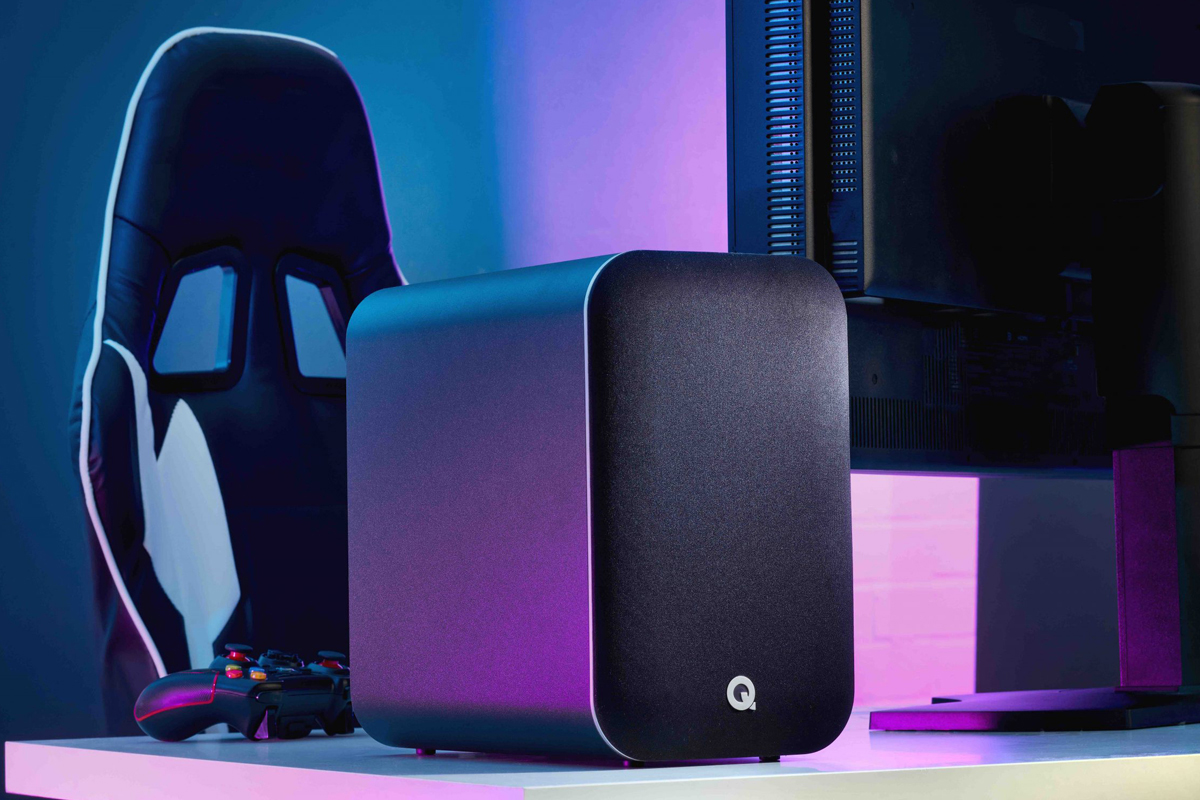
Comparisons were difficult as I have a family of Devialet Silver Phantoms (discontinued, $2390 each when available) throughout my home. When replaying the tracks through my Silvers, there were obvious differences in the depth of the soundstage. However, this was only noticeable when I played the Devialets as a direct comparison to the smaller British speakers and I can’t let those differences cloud my appreciation of the M20s. I used them continuously after they arrived and was happy with their sound quality and ease of use—both as dedicated TV speakers and as a pair of loudspeakers for music replay in small- to medium-size rooms.
Conclusion
These all-inclusive, multipurpose speakers were just as comfortable in my nephew’s game room playing Rust and Destiny 2 as they were providing the audio for the latest episode of Yellowstone, or acting as standalone speakers. They provided excellent, low-distortion stereo reproduction with plenty of bass across all formats and are a bargain for the sound quality they produce. Three years after SoundStage! first reviewed a Q Acoustics product, I am now the sixth SoundStage! reviewer to be impressed with the excellence of the company’s creations on all fronts. A high-quality build married to high-quality sound, all at an affordable price.
. . . Kurt Wetzel
Associated Equipment
- Active loudspeakers: Devialet Silver Phantom.
- Display: Samsung UN55MU6300.
- Sources: Apple iPhone 11 running Spotify 8.7.21.1728; MacBook Air running iTunes 12.9.5.5.
- Accessories: Musou 1080P HDMI-to-RCA composite A/V converter.
Q Acoustics M20 HD Powered Wireless Music System
Price: $599.
Warranty: One year, parts and labor; two years with registration.
Q Acoustics
Armour Home Electronics
Woodside, 2 Dunmow Road
Bishop’s Stortford
Hertfordshire CM23 5RG
United Kingdom
Website: www.qacoustics.com



